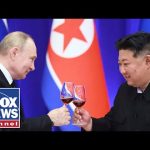The tensions between the United States and Iran are heating up once again, and the stakes have never been higher. Iran’s Supreme Leader recently declared that the standoff with the U.S. is resolute and that the Islamic Republic will never back down. This proclamation comes in the wake of U.S. attacks against Iran’s nuclear facilities, which occurred over two months ago. Persuaded that the attacks would rally the Iranian people against their government, the U.S. expected a swift change in leadership. However, the reality is far different, as the Iranian regime stands firm in the face of adversity.
Meanwhile, the International Atomic Energy Agency (IAEA) is stepping back into the picture, or at least attempting to. Following the military strikes on Iranian sites that caused their inspectors to evacuate, there are talks of bringing them back for inspections. It seems this time, some progress may be underway. The IAEA is adamant about resuming its crucial work, but this will be a complicated endeavor. Different factions within Iran have varied opinions on whether the presence of international inspectors is beneficial or detrimental to their national security. The IAEA is ready to negotiate the terms for its return, aware that Iran must comply with the agreement it signed regarding inspections.
As the IAEA aims to restart its inspections, discussions in Washington are heating up as well. The U.S. administration is closely monitoring these developments, and it appears they are not planning to take any steps backward. The Trump administration, known for its cautious approach toward Iran, has largely opted out of negotiations. However, there are ongoing conversations between U.S. officials and IAEA representatives, showing a willingness to explore potential paths forward. Despite the political complexities, there is hope that some agreements can be reached, particularly as the situation continues to unfold.
Ironically, the road to peace may not be as bumpy as expected. Recent weeks have seen some diplomatic successes, proving that even in tumultuous times, reconciliation is possible. Nevertheless, there are unique considerations in this case, particularly with Israel being involved in the conversation. The history of strained relations means that negotiations must be carefully constructed. The IAEA’s presence is crucial in ensuring transparency around Iran’s nuclear ambitions, as any serious negotiations would require a firm grasp of the realities on the ground.
As the clock ticks, the question remains: how long will Iran have to comply before sanctions are reimposed? This is not solely for the U.S. to determine; European nations are deliberating this very issue. Any sanctions discussion points toward whether Iran will work collaboratively with the IAEA and allow inspections to take place. Ultimately, the international community is waiting to see if Iran can return to a state of normalcy, one where moderation takes precedence over aggression. The eyes of the world are watching, and judging by the stakes involved, everyone has a vested interest in how this saga unfolds.




